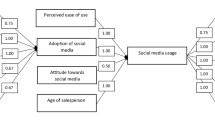Abstract
The social media offers the firms the capability to assess the feelings towards the contexts and the actions related to them in the real time. Additionally, the initial demarche of the sentiment assessment is the pre-processing of information gathered from the social media. Several prevailing analysis is focused on dealing with the social media by mining fresh characteristics in relation to the sentiment. The objective is to offer the employment of Twitter in a number of designed topics which is the immense social networking sites where the Twitter information is constantly escalating at immense ratio every day which regards it as Big Data source. Followed by which the mechanism is Big Data scheme like infosphere big vision permits the processing of information which is initially gathered from the social networks by Apache Flume and hoarded in Hadoop storage. Moreover, the intention is to combine the perceptions of these assessment outcomes employing big sheets. The assessment based on these investigations approves the Big Data platform creates improved outcomes in terms of assessing the social media.









Similar content being viewed by others
References
Li, R., Lei, K. H., Khadiwala, R., & Chang, K. C. (2012). TEDAS: A Facebook-based event detection and analysis system. In 2012 IEEE 28th International Conference on Data Engineering, ICDE (pp. 1273–1276).
Terrana, D., Augello, A., & Pilato, G. (2014). Automatic unsupervised polarity detection on a Facebook data stream. In Proceedings of IEEE international conference on semantic computer, newport beach, CA, USA (pp. 128–134).
Popović, M., Milosavljević, M., & Dakić, P. (2016). Facebook data analytics in education Using IBM infosphere biginsights. In The internet and development perspectives, international scientific conference on ICT and E-business related research, sinteza.
Vohra, D. (2016) Apache flume. In Practical Hadoop ecosystem (pp. 287–300), September 2016.
Rodríguez-Mazahua, L., Rodríguez-Enríquez, C. A., Sánchez-Cervantes, J. L., et al. (2016). A general perspective of Big Data: applications, tools, challenges and trends. The Journal of Supercomputing, 72, 3073.
Makeshwar, P.B., Kalra, A., Rajput, N.S., & Singh, K.P. (2015). computational scalability with apache flume and mahout for large-scale round the clock analysis of sensor network data. In National conference on recent advances in electronics and computer engineering.
Shvachko, K., Kuang, H., Radia, S., & Chansler, R. (2010). The Hadoop distributed file system. In The 26th IEEE symposium on mass storage systems and technologies (Vol. 12, pp. 1–10).
Pang, B., Lee, L., & Vaithyanathan, S. (2002). Thumbs up sentiment classification using machine learning techniques. In Proceedings of the conference on empirical methods in natural language processing (EMNLP) (pp. 79–86).
Turney, P. (2002). Thumbs up or thumbs down. semantic orientation applied to unsupervised classification of reviews. In ACL’02.
Dave, K., Lawrence, S., & Pennock, D. (2003). Mining the peanut gallery: Opinion extraction and semantic classification of product reviews.
Kim, S., & Hovy, E. (2004). Determining the Sentiment of Opinions. In COLING’04.
Vinodhini, G., & Chandrasekaran, R. (2012). Sentiment analysis and opinion mining: A survey. International Journal, 2(6), 282–292.
M. Gamon, A. Aue, S. Corston-Oliver, & Ringger, E. K. (2005). Pulse: Mining customer opinions from free text. In IDA’2005.
Hu, M., & Liu, B. (2004). Mining and summarizing customer reviews. In KDD’04.
Hu, M., & Liu, B. Mining and summarizing customer reviews. In KDD ‘04 Proceedings of the tenth ACM SIGKDD international conference on Knowledge discovery and data mining (pp. 168–177).
Wilson, T., Wiebe, J., & Hoffmann, P. Recognizing contextual polarity in phrase-level sentiment analysis. In The Advanced Research and Development Activity (ARDA).
Wu, Y., Zhang, Q., Huang, X., & Wu, L. (2011). Structural opinion mining for graph-based sentiment representation. In Proceedings of the 2011 conference on empirical methods in natural language processing (EMNLP-2011).
BalaAnand, M., Sankari, S., Sowmipriya, R., & Sivaranjani, S. (2015). Identifying fake user’s in social networks using non verbal behavior. International Journal of Technology and Engineering System (IJTES), 7(2), 157–161.
Ha, I., Back, B., & Ahn, B. (2015) MapReduce functions to analyze sentiment information from social big data. International Journal of Distributed Sensor Networks, Article ID 417502. http://dx.doi.org/10.1155/2015/417502.
Beyer, K. S., Ercegovac, V., Gemulla, R., Balmin, A., Eltabakh, M., Kanne, C.-C., et al. (2011). Jaql: A scripting language for large-scalesemistructured data analysis. In Proceedings of the VLDB conferrence.
BalaAnand, M., Karthikeyan, N., & Karthik, S. (2018). Designing a framework for communal software: based on the assessment using relation modelling. Int J Parallel Prog. https://doi.org/10.1007/s10766-018-0598-2.
Sivaparthipan, C. B., Karthikeyan, N., & Karthik, S. (2018). Designing statistical assessment healthcare information system for diabetics analysis using big data. Multimedia Tools and Applications.
BalaAnand, M., Karthikeyan, N., Karthick, S., & Sivaparthipan, C. B. (2018). Demonetization: A visual exploration and pattern identification of people opinion on tweets. In 2018 International conference on soft-computing and network security (ICSNS), Coimbatore, India (pp. 1–7). https://doi.org/10.1109/icsns.2018.8573616.
Maram, B., Gnanasekar, J. M., Manogaran, G., et al. (2018). Intelligent security algorithm for UNICODE data privacy and security in IOT. SOCA. https://doi.org/10.1007/s11761-018-0249-x.
Anupriya, K., Gayathri, R., Balaanand, M., & Sivaparthipan, C. B. (2018). Eshopping scam identification using machine learning. In 2018 International conference on soft-computing and network security (ICSNS), Coimbatore, India (pp. 1–7). https://doi.org/10.1109/icsns.2018.8573687.
Author information
Authors and Affiliations
Corresponding author
Additional information
Publisher's Note
Springer Nature remains neutral with regard to jurisdictional claims in published maps and institutional affiliations.
Rights and permissions
About this article
Cite this article
BalaAnand, M., Karthikeyan, N. & Karthik, S. Envisioning Social Media Information for Big Data Using Big Vision Schemes in Wireless Environment. Wireless Pers Commun 109, 777–796 (2019). https://doi.org/10.1007/s11277-019-06590-w
Published:
Issue Date:
DOI: https://doi.org/10.1007/s11277-019-06590-w




